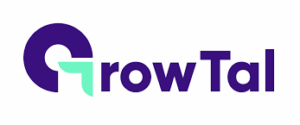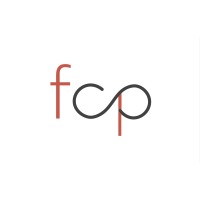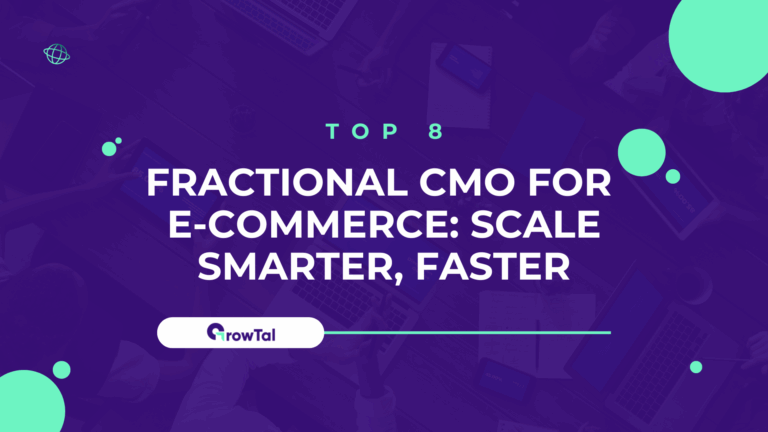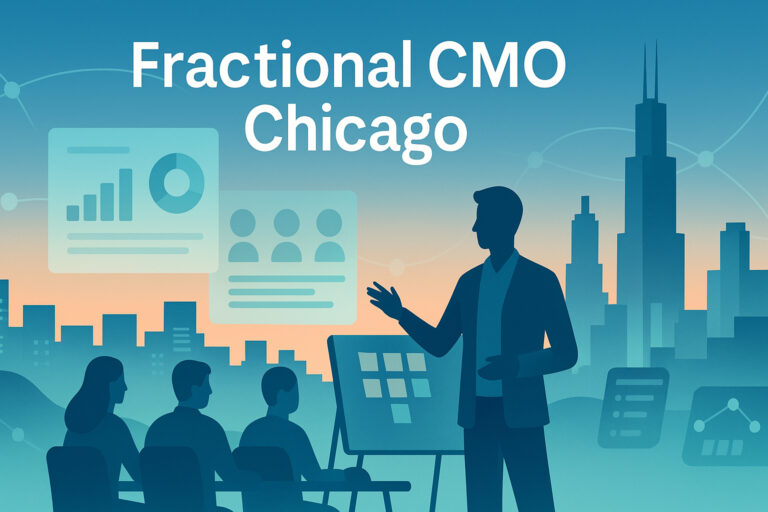Marketing leaders are under pressure to do more with less—and do it faster. That’s why more founders and GTM teams are choosing SaaS fractional CMO leadership in 2025. It gives you executive-level strategy without the full-time price tag, enabling budget agility, faster time-to-impact, and reduced hiring risk.
So, if you’re exploring a fractional CMO for SaaS to accelerate pipeline, tighten CAC, and professionalize GTM, you’re in the right place.
What you’ll get in this guide:
- A clear, criteria-driven way to evaluate partners, beyond vanity metrics.
- A growth-stage selection framework that maps MVP, PMF, T2D3, and enterprise needs to the right engagement model.
- A vetted list of top providers, each with strengths, ideal use cases, and when they’re not the best fit.
What Is a SaaS Fractional CMO?
A SaaS fractional CMO is a part-time, executive-level leader who owns your GTM strategy, resourcing, prioritization, and revenue-linked outcomes—delivering senior marketing leadership without the full-time overhead.
What they do (at a glance):
- Positioning & category narrative
- ICP refinement & segmentation
- Demand strategy and campaign prioritization
- Pipeline creation, targets & forecasting
- Sales alignment (definitions, SLAs, handoffs)
- Lifecycle growth (onboarding → expansion/retention)
- Analytics, attribution & reporting cadence
- Hiring and orchestration of in-house teams, freelancers, and agencies
When to consider:
Post-MVP through scale-up—when you need strategic leadership and faster time-to-impact, but a permanent CMO is premature. A fractional CMO for SaaS lets you validate strategy, accelerate pipeline, and keep spend flexible.
Why a SaaS Fractional CMO Beats a Full-Time Hire (Right Now)
A SaaS fractional CMO gives you senior leadership, faster results, and less risk, without locking in a full-time exec.
Agility & cost efficiency
- Variable commitment: scale hours and scope up or down.
- Lower fixed costs: no full-time salary, bonus, or equity.
- Budget control: point investment at the highest-impact work first.
Speed to impact (30–60 days)
- Stand up a clear GTM plan fast.
- Prioritize the few channels most likely to move pipeline.
- Launch disciplined experiments quickly, then double down on what wins.
- Sync with sales on definitions, handoffs, and targets from day one.
Risk reduction
- Try-before-you-scale: start with milestones and a 90-day plan.
- Clear exit options if priorities change or outcomes lag.
- Learn what works before committing to a permanent C-suite hire.
Organizational leverage
- Immediate orchestration across content, brand, paid, lifecycle, product marketing, and RevOps.
- Utilizes your existing team plus trusted freelancers/agencies—no months-long hiring spree.
- One accountable leader aligning strategy, execution, and reporting.
Bottom line: You get executive-level rigor, faster momentum, and flexibility. If you need to prove the model, build pipeline, and control burn, a fractional CMO is the most practical path to results right now.
How to Evaluate a Fractional CMO for SaaS
Choosing the right SaaS fractional CMO comes down to fit, accountability, and repeatable execution. Use the criteria below, and score each candidate to keep decisions objective.
1) Growth-stage fit
- MVP: Positioning/ICP clarity, message–market fit, scrappy tests. Targets: GTM thesis in ≤14 days; 5–10 founder/customer interviews; first three experiments live in ≤21 days.
- PMF: Expansion messaging, retention mechanics, lifecycle & referral engines. Targets: ≥3 lifecycle plays launched; activation-to-demo lift +15–25% in 90 days.
- T2D3: Pipeline scale, CAC efficiency, channel mix, partner motions. Targets: 3–5x pipeline coverage; CAC payback trending to ≤12 months (mid-market) or ≤18 months (enterprise).
- Enterprise: Segment/vertical plays, ABM, multi-threaded deals, governance. Targets: Named-account program live in ≤45 days; ≥2 buying-group personas enabled.
2) Revenue accountability
Look for pipeline ownership with SLAs: opportunity-creation targets, tight SQL/SAO definitions, forecast cadence, and documented handoffs—not just MQL volume. Ask for quarterly pipeline goals tied to ACV and sales velocity.
3) Experimentation engine
Ask for proof of a rapid testing playbook: hypothesis backlog, test velocity targets, weekly readouts, and “kill/scale” rules. Targets: ≥3 meaningful tests/week; time-to-first experiment ≤14 days; 70%+ tests instrumented end-to-end.
4) Long-term SaaS metrics
Prioritize leaders who manage ARR growth, NRR, LTV:CAC, payback period. Request expected ranges based on stage (e.g., NRR 100–120%+, LTV:CAC ≥3, payback ≤12–18 months) and past results with context.
5) Content as a strategic lever
You want category narrative + SERP strategy that drives pipeline: intent-led content, sales enablement, POV assets, and distribution. Targets: content-influenced pipeline share rising to 30–50% over two quarters; enablement adoption by ≥80% of AEs.
6) Cross-functional alignment
Look for tight collaboration with sales, product, and CS plus RevOps rigor (attribution model, forecasting hygiene, source/assist dashboards inside your CRM/BI).
7) Cultural fit & transparency
Confirm cadence (weekly exec readout), comms norms, tooling, and clear success criteria. You should see a 30/60/90 plan, risk log, and dependency map.
Mini scorecard
Rate each area 1–5: Stage fit, Revenue accountability, Experimentation engine, SaaS metrics mastery, Content strategy, Cross-functional alignment, Transparency.
- Weighting (suggested): Stage fit ×2, Revenue accountability ×2; others ×1.
- Pass mark: ≥24/35 (or ≥32/45 with weights).
Use this to compare a fractional CMO for SaaS shortlist side-by-side before you commit.
Editor’s Picks: The Best Fractional CMO Agencies for SaaS in 2025
We reviewed providers that:
(1) offer true fractional/interim CMO leadership (not just “account leads”),
(2) show clear SaaS/B2B depth across positioning, demand gen, lifecycle, and sales alignment,
(3) can activate execution quickly around the leader (content, paid, lifecycle, RevOps),
(4) support multiple growth stages (post-MVP → scale),
(5) demonstrate process rigor and proof (case examples, onboarding flow, reporting cadences).
1. GrowTal — Best overall for flexible leadership + execution (Editor’s Choice)

Snapshot: A vetted network of remote marketing experts, including interim CMOs and specialists across SEO, content, paid, lifecycle, UX, and more. Intake is a short questionnaire → handpicked match → start; flexible pricing (hourly/part-time/full-time) and the ability to scale up or down as needs change.
Why it stands out: leadership and doers in one place, fast activation, and transparent terms.
Typical engagement: fractional/interim CMO owns GTM and KPIs; add specialist hours as priorities emerge.
Time to impact: generally weeks (after discovery sprint).
Tooling: matched per expert; categories include SEO, email, paid, UX, and interim CMOs.
When not a fit: if you want a single, long-term fixed retainer with a rigid team.
Build your bench with Remote Marketing Experts.
2. Magnetude Consulting — Best for B2B tech firms wanting a “fractional marketing department”

Snapshot: B2B firm offering Fractional CMO services plus an embedded team model; recognized in the HubSpot ecosystem.
Engagement: retainer-based, operating like an in-house team with leadership participation.
Time to impact: weeks once the scope and cadences are set.
Tooling: strong HubSpot fluency.
When not a fit: if you only need light advisory.
3. &Marketing — Best for matching a SaaS fCMO from a curated bench

Snapshot: Provider explicitly addressing SaaS fractional CMO needs; they assess your stage, audience, and goals to match a fractional leader, with flexible support and execution resources.
Engagement: fCMO leadership with optional services; rates vary by scope.
Time to impact: weeks after discovery.
When not a fit: if you require a single-channel specialist only.
4. Fractional CMO Partners (FCP) — Best for B2B tech startups needing pipeline accountability

Snapshot: Network of seasoned fractional CMOs focused on B2B tech/SaaS growth; site highlights outcomes such as tripling enterprise leads and generating 500+ new opportunities in a year for a SaaS client.
Engagement: fractional CMO leadership with demand gen emphasis.
Time to impact: weeks post-onboarding.
When not a fit: if you need only marketing ops without strategy.
5. Mahdlo Executive Advisors — Best for SaaS/AI firms balancing CMO & CRO leadership

Snapshot: Offers fractional CMO and CRO services with dedicated pages for SaaS/tech/AI and case studies (e.g., SaaS US-market expansion; SaaS lead-gen program).
Engagement: revenue leadership across marketing + sales alignment; can support international expansion.
Time to impact: weeks once GTM plan is agreed.
When not a fit: if you want only campaign execution without leadership.
Build an Elastic Growth Bench with Remote Marketing Experts
Even with a SaaS fractional CMO setting direction, execution capacity determines speed. The fastest-growing teams pair leadership with on-demand specialists across content, paid acquisition, product marketing, lifecycle/CRM, analytics, and RevOps—so strategy turns into pipeline without waiting on headcount.
Remote Marketing Experts
Seamlessly integrate Remote Marketing Experts to spin up pre-vetted talent for GTM surges, launches, or backfilling gaps, without long hiring cycles. You get a curated match for the skills you need now (SEO, content, paid, lifecycle, RevOps), flexible hours that scale with results, and clear scopes so your leader isn’t stranded without doers. This is especially useful when a fractional CMO for SaaS needs to activate multiple channels in parallel.
How to brief & onboard for speed
- Objectives & KPIs: Define ARR/pipeline goals, CAC/payback targets, and leading indicators (demo requests, SAOs).
- Channel priorities: Rank the top 2–3 plays for the first sprint; park the rest in a backlog.
- Roles & decision rights: Document who owns strategy, budgets, and approvals.
- Reporting cadence: Weekly standup + monthly exec readout with a shared dashboard.
- Tool access & data: Grant CRM/ads/analytics access on day one; standardize naming conventions.
- Experiment plan: Agree on test velocity, “kill/scale” rules, and the 30/60/90 roadmap.
Onboarding Playbook: Your First 90 Days with a Fractional CMO for SaaS
Make the first quarter count. This playbook aligns leadership, execution, and measurement so your SaaS fractional CMO moves from audit to compounding wins fast.
Days 0–15: Diagnose & baseline
- Audit: Funnel (lead → SAO → closed-won), messaging/ICP, website and SERP footprint, paid/lifecycle programs, partner motions.
- Analytics baseline: Define KPI tree (ARR, pipeline $, SAOs, CAC, payback, NRR). Validate tracking, UTMs, CRM hygiene, and attribution rules.
- Pipeline diagnostics: Coverage, stage conversion, velocity, ACV mix; identify friction with sales.
- Quick wins list (prioritized): Fix leaks (forms, routing, nurture), ship one enablement asset, relaunch 1–2 high-intent campaigns.
Days 16–45: Plan, staff, and launch
- GTM plan v1: Segments, value props, offers, channel mix, quarterly targets, budget.
- Experiment backlog: Hypothesis → metric → owner → “kill/scale” rule; set weekly test velocity.
- Content & paid priorities: 2–3 intent-led content plays; 1–2 paid programs mapped to ICPs and funnel stages.
- Sales enablement: Battlecards, talk tracks, case one-pagers; align SQL/SAO definitions and SLAs.
- RevOps cleanup: Naming conventions, lifecycle stages, lead routing, dashboards.
Days 46–90: Prove, scale, and forecast
- Scale what works: Double-down on channels with best CAC:Payback; pause low-yield tests.
- Attribution refinement: Multi-touch views, model sanity checks, “content-influenced pipeline” reporting.
- Roadmap next quarter: Targets, budget shifts, headcount/bench needs, partner/ABM motions, risk log.
Governance that keeps everyone aligned
- Weekly exec readout: KPIs, learnings, decisions, blockers.
- Shared dashboards: CRM + BI views visible to marketing, sales, and finance.
- Decision rights: Document who owns strategy, budget, approvals, and test gates.
- Exit criteria: 30/60/90 milestones with pre-agreed triggers to pivot, expand, or end the engagement.
Pricing, Contracts, and Expected ROI
Typical models. Most SaaS fractional CMO engagements use one of four structures:
(1) monthly retainer (set hours, predictable cadence),
(2) sprint-based (2–6 week outcomes),
(3) project-to-retainer (prove value, then scale), or
(4) “execs-as-a-service” day-rate for high-intensity leadership blocks.
What affects cost. Stage complexity (MVP vs. T2D3), channel mix (paid + content + ABM), team size to orchestrate, and your data/ops maturity (CRM/attribution cleanup increases ramp time).
What “good” looks like. Pipeline targets tied to ACV and sales velocity (e.g., 3–5× coverage); CAC payback trending ≤12–18 months by segment; leading indicators improving inside 30–60 days—demo requests, SAOs, PQLs, win-rate lift, and shorter cycle time.
Questions to ask vendors.
- Who owns revenue targets and opportunity creation? How is the pipeline forecasted?
- What is your test velocity (tests/week) and “kill/scale” criteria?
- Expected ARR/NRR impact by quarter—what ranges are realistic for our stage?
- What will you need from us (data access, budget, decision rights) to hit the plan?
- How will you report (dashboards, weekly exec readouts, attribution model)?
Expand Your Bench: Freelancers & Specialists that Stick
Retention matters. When your extended team stays intact, knowledge compounds, execution speeds up, and your SaaS fractional CMO can scale what works without constant re-onboarding.
Flip the freelancer’s perspective into your operating model. Insights from 8 Tips for Boosting Client Loyalty as a Freelancer map neatly to the client side:
- Clarity: Tight briefs, defined KPIs, and decision rights.
- Feedback: Fast, specific notes tied to goals.
- Predictable scope: Fewer surprises; steady cadence wins.
- Recognition: Share results, credit wins, pay on time.
Use Freelance Marketing: Everything You Need to Know to Get Hired to understand what top freelancers value and how they assess clients—mission clarity, tooling access, realistic timelines, and trust in the process.
Operational tips for week-one productivity
- SOPs & playbooks: Document workflows for content, paid, lifecycle, and QA.
- Reusable brief template: Goals, audience/ICP, message, offer, channel, budget, timeline, owners.
- Access & environment: Day-one credentials for CRM, ads, analytics, and DAM; naming conventions and folder structure.
- Cadence: Weekly standups + monthly exec readouts; shared dashboard for KPIs, test backlog, and “kill/scale” calls.
How to Get Started
Step 1 — Set outcomes: Define ARR/NRR goals plus leading indicators (SAOs, demo requests, PQLs).
Step 2 — Baseline: Capture current funnel metrics and analytics health.
Step 3 — Choose your model: Full-service agency or independent leader + bench (often fastest for a SaaS fractional CMO).
Step 4 — Shortlist 3–5: Prioritize stage fit and domain expertise.
Step 5 — Interview with a scorecard: Weight stage fit, revenue accountability, test velocity, and reporting cadence.
Step 6 — Pilot 90 days: Pre-agree milestones, budget, decision rights, shared dashboards, and exit criteria.
Explore Remote Marketing Experts to assemble a matched fractional CMO and specialist bench that can execute from day one.
FAQ
How much should a fractional CMO charge?
Most fractional CMOs price $200–$350 per hour, with experienced specialists sometimes higher; many also offer monthly retainers (often a few thousand to low-five figures) or short project sprints. The spread reflects scope, seniority, and whether you’re buying leadership only or leadership + execution.
What is the salary of a CMO in SaaS?
US benchmarks vary widely by stage and size, but public datasets show averages roughly $160k–$300k+ total comp: Built In lists an average CMO salary around $224k, while Glassdoor’s reported total pay average is about $303k. Treat these as directional; equity, bonuses, and geography can shift the package materially.
Is a fractional CMO worth it?
Often, yes—especially post-MVP when you need senior GTM leadership without the fixed cost and hiring lag of a full-time CMO. A fractional model can accelerate time-to-impact and keep spend variable; a prudent approach is a 90-day pilot with pipeline, CAC/payback, and experiment-velocity targets before scaling.
What is a fractional CFO for SaaS?
A fractional CFO is a part-time or contract CFO who brings senior financial leadership—planning, forecasting, cash-flow control, and metrics such as ARR, NRR, CAC, and revenue recognition—without a full-time hire. For SaaS companies, it’s the same CFO remit adapted to subscription economics and metrics, delivered on a flexible basis.


